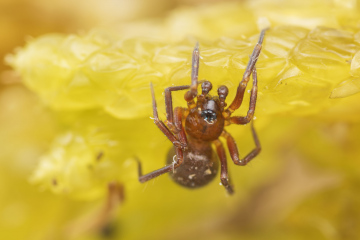Summary for Agyneta cauta (Araneae)
previous species | next species
National Distribution
Terms of Use. Double-click on map to go to region

Explore Regional Distribution
Please log on and add a note on this species
About this species
Recorded altitude range3m to 850m
Species text
DistributionThe species is widespread on southern heathlands, in Wales, northern England and Scotland, but absent or very scattered elsewhere. It is a European species, widespread in most of north-western and central Europe, but apparently not recorded from France.
Habitat and ecology
A. cauta is generally found in litter, detritus and sometimes in moss in damp sites. Crocker & Daws (1996) record the capture, in Leicestershire in July, of both sexes in a pitfall trap set in bracken/heather heathland, and of a male on the same occasion in a trap set in open, rocky, exposed Nardus grass heath on a summit ridge at 900' (270 m). It has been recorded from a small Sphagnum bog in Essex and occurred commonly in blanket bog in Scotland, together with A. olivacea. Adults of both sexes have mainly been recorded from early to mid-summer, with females occasionally persisting until the autumn.
Status
Although recorded from a total of 207 hectads, the spider has only been found in 52 hectads since 1992. This huge apparent decline may be explained by many older records from the north and west referring to A. olivacea, and by relatively poor recent recording in Welsh wetlands, the Pennines and southern heathland, three key areas for A. cauta. Nevertheless, the species should be monitored.
Threats
Drainage of wet areas in heathland, moorland and bogs represents a potential threat to this species.
Management and conservation
Ensure the maintenance of a high water table in those habitats where it occurs.
Text based on Dawson, I.K., Harvey, P.R., Merrett, P. & Russell-Smith, A.R. (in prep.). References
Adult Season
Habitats
background methodology
Recorded management for locations with Agyneta cauta
Recorded substrate and hydrology for locations with Agyneta cauta
Images
please log on and upload a new image for this speciesSee also A-Z Species Index - A-Z Picture Index - previous species | next species
